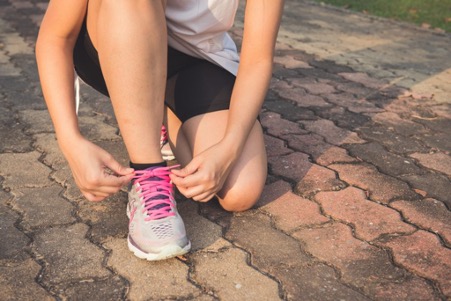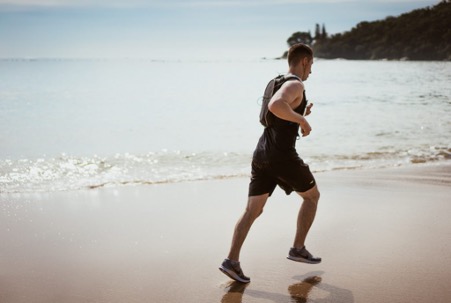Running has seen massive growth in popularity in the last few months; from both the novice to the seasoned runner, as many took the opportunity for socially distanced exercise and much-needed respite from the grind of lockdown life. Here in Ealing, we’re so fortunate to have so many beautiful parks and tree-lined streets to map out our routes. We’ve also had the added bonus of predominantly good weather to further entice us into appreciating our surroundings! Inevitably, most running challenges, including the fantastic Ealing half marathon, have had to be cancelled this year (although the 13.1 challenge is happening right now). These events will return, but in the meantime, running can be enjoyed for all the many health benefits it brings. Here we look at just some of them, plus we share our top tips for running safely.
THE BENEFITS
Running increases longevity.
A 2018 meta-analysis (https//bjsm.bmj.com/content/early/2019/09/25/bjsports-2018-100493) found that runners had between 25% and 30% lower rate of all-cause mortality than non-runners. This is due to a number of factors which include an increase in cardiovascular fitness; reduced blood pressure; reduced cholesterol and body fat; better glucose and insulin control, so reducing the risk of developing type 2 diabetes; better hormone regulation; improvements to bone density; and positive neurological functioning.
It has a positive impact on mental health
– through the release of hormones and chemicals that promote a sense of wellbeing.
It improves immunity.
Running has been found to improve the body’s surveillance against disease, lower inflammation, enhance gut microbiota composition, reduce risk of upper respiratory infections and influenza and improve antibody response (https://www.sciencedirect/article/pii/S2095254618301005). There is an important note of caution here however, that extreme exercise can actually lower immunity.
It can help reduce the risk of many cancers.
A study in 2016 found that runners had a lower risk for developing an incredible 26 different kinds of cancer than low or non-exercisers (10.1001/jamainternmed.2016.1548).
It can improve cognitive functioning and help reduce cognitive decline.
As running raises heart rate and blood flow, it makes sense that the brain will benefit from more oxygen-rich blood being pumped to it. One study suggests that running stimulates the release of brain-derived neurotrophic factor. This protein encourages the growth and survival of neurons in the brain (https://doi.org/10.1111/ejn.13603).
It aids sleep.
Not only helping you to fall asleep faster but also helps to improve the quality of your sleep (https://www.hopkinsmedicine.org/health/wellness-and-prevention/exercising-for-better-sleep).
Contrary to popular belief, it can help your back and knees!
A study of 44 novice marathon runners found that the condition of their bone marrow and articular cartilage improved and these improvements were sustained for at least six months post-marathon (https://www.ncbi.nlm.nih.gov/pubmed/32065245). Similar results were found for the lower back with middle-aged long-term endurance runners exhibiting less age-related decline in their lumbar intervertebral disc heights (https://journals.plos.org/plosone/article?id=10.1371/journal.pone.0229457).
STAYING ON TRACK

Here are our top tips for running safely:
- Invest in a decent pair of trainers – aside from this outlay, running is a very economical form of exercise!
- Make sure you warm up and cool down. A good warm up for running can be as simple as brisk walking for approximately 10 minutes, incorporating some shoulder/arm rolls to loosen your upper body. To cool down, simply finish your run with walking and stretches as you wish (check out a great article by Tom Goom @running physio, ‘Should runners stretch?’)
- Pace yourself. Start gently and slowly build up. For the novice, a combination of short runs and walks is a good start (couch to 5K, for example, recommends a ratio of 60:90 seconds run/walk for 20 minutes, 3 times a week, for the first week with gradual progression throughout the 9 week programme).
- Let your breathing be a guide as you run. The ‘talk test’ is quite useful – if you feel yourself getting so out of breath you can’t talk, slow down the pace a bit.
- Remember rest days are as important as your run days as your body needs time to recover and recuperate from your training.
- Do regular specific strengthening exercises. Running obviously works your leg muscles but also involves muscles around your pelvis, core and upper body. There are a multitude of exercises you can do to strengthen your muscles for running and aid your performance, so much so it can be confusing to know which is best. The following three exercises provide targeted specific strengthening that will not only increase your muscle strength but should also help your overall running performance.
1. The reverse lunge
This is a great hip stabilizer and glutes strengthener and works the hamstring, quadriceps and core muscles. It’s also kind to the knee joint. Start with high knee position – one knee/hip flexed to 90 degrees. Push the other hip forwards as you bring the flexed knee back, bringing the toe to the floor and bending both knees and then return to starting position. Aim for 2 x 15 reps on each side (see Greg demonstrate this on our Instagram page/or alternatively at kinetic-revolution.com).
2. The split squat
This is a great exercise as it mimics the opposite actions of the hips during running and provides a halfway house between a single leg squat and a normal squat. It works on stability, strength and stride length for runners. It achieves co-contraction of the hams/quads and glutes. Start with feet hip width apart and assume a long stance – one foot forward, the other back. Engage your abs and glutes as you bend both knees, moving straight down so the back knee is almost touching the ground. Keep the knee pointing forwards as you do this. Push up through the front heel back to starting position. Aim to do 3 x 10 reps on each side (again for demonstration of this exercise, see James Dunne @ kinetic-revolution.com).
3. Modified plank
A brilliant core exercise that is kind for your back. Starting position is on all fours – straight arms shoulder width apart, knees, hip width apart. Engage pelvic floor and abs and lift your knees just slightly off the ground and hold the position. Check shoulders remain ‘open’ – i.e. keep the top of the shoulders relaxed. Aim to hold this position for 3 x 20 secs, progressing to 1 x 60 sec hold.
W5Physio is ready to help
We’ve seen that the benefits of running are significant and can be life-changing. With the right preparation and attention to maintaining fitness and resilience, running can be enjoyed for many years.
We hope this has been helpful. Please remember, all the exercises outlined above should be performed pain-free. Do get in touch with any questions or queries, and of course, if you have any problems, we’re ready to help.
Happy running!






